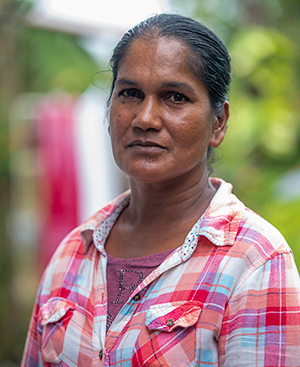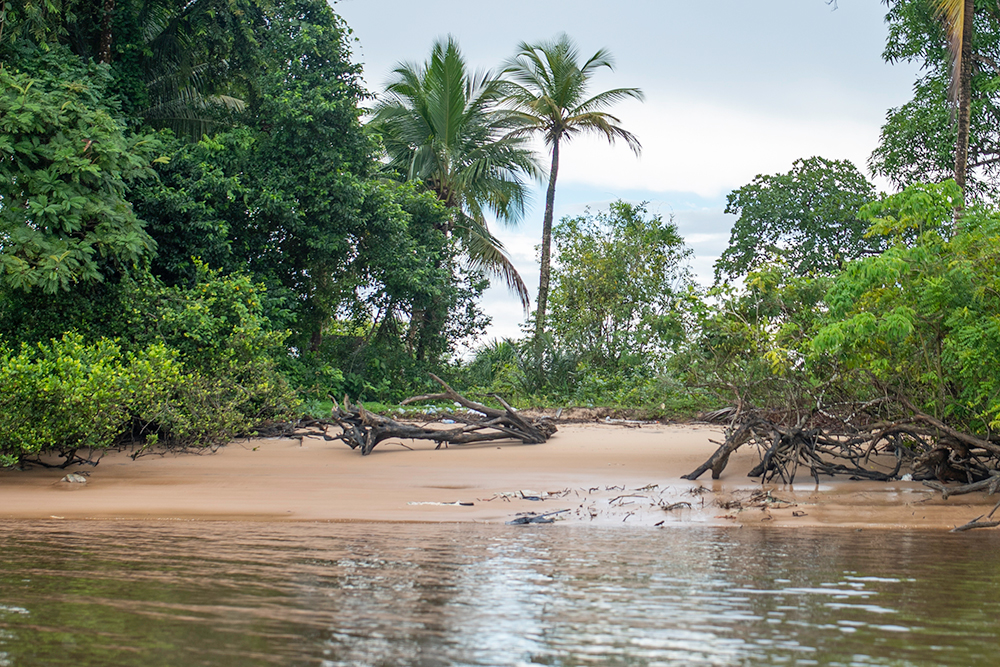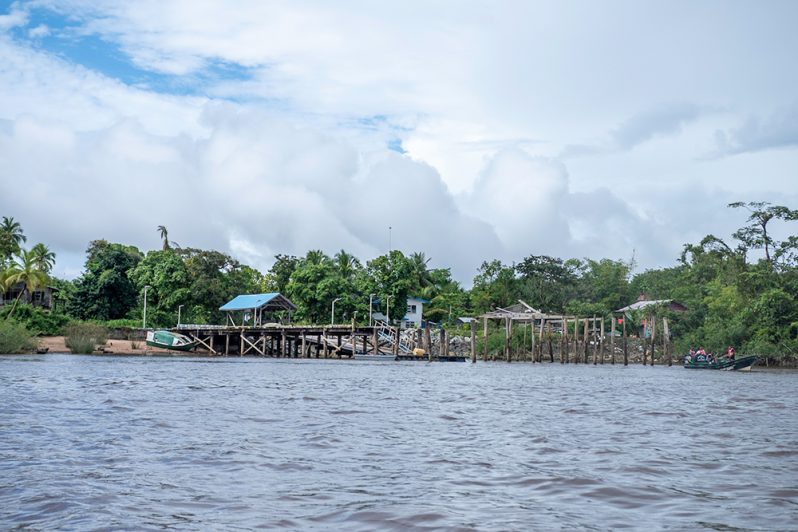BASMATTIE Seecharran is a resident of Fort Island, Essequibo River and she would sell her produce on Fort Island Ferry Stelling since its opening and the re-launching of the ferry service.
The 45-year-old told the Pepperpot Magazine that she was very pleased that she had a place to sell her fruits and cash crops to earn because getting employment off the island wasn’t an option.
Seecharran added that she has a table at the stelling and when the ferry comes she would be there to sell.

The local stated that she was also looking for another job and had applied for the position as sweeper/cleaner at the Fort Island School and was awaiting a response so she can start work for the new school term.
Seecharran related that she believes that her life will improve when she has a full-time job and is looking forward to the opportunity.
Ivor Haynes, the security guard/farmer
The team also met 69-year-old Ivor Haynes, a resident of Fort Island, Essequibo River, who is employed as a security guard at the Fort Island Ferry Stelling.
Haynes told the Pepperpot Magazine that he is originally from Jacklow, Pomeroon River but left when he was 12 years old with his family in search of a better life and he later married a resident of the island and settled there as an adult.
He is the father of five and grandfather of 11 and great-grandfather of five.
Haynes said he has been living on the island for the past 49 years and is a farmer, who used to reside at Hyde Park, Parika and was working on a farm at Kaow Island before settling at Fort Island.

The elder stated that he has his own small farm at Quarter Benabo Island, Essequibo River and he has a cultivation of coconuts, bananas and eddoes.
“The job has been going very well so far. I am on the day shift as a security guard at the Fort Island Ferry Stelling and I have no complaints. It feels good to work from right where you live and I am thankful,” he said.
Haynes told the team that when he met the girl from Fort Island, he had to follow her there because her parents asked him to, and he has a modest cottage-style house which is surrounded by nature.
He added that having a steady job was a blessing and, for the first time, it felt good because farming is seasonal and when the rainy weather sets in, there is hardly anything to do on the farm.
Haynes told the Pepperpot Magazine that life on Fort Island is modest and peaceful. He is pleased that they have also benefitted from solar street lights for the first time, and it is a good move.
He added that he also benefitted from the cash grants initiative for riverine and hinterland communities.
The history of Fort Island
Fort Island was once known as Flag Island because of the huge flag mounted on the island to guide Dutch ships traversing the lengthy and mighty Essequibo River.
Later, the name was changed to Fort Island- perhaps because it houses Fort Zeelandia, the ‘youngest’ Dutch fort in Guyana.

Centuries ago, the fort was constructed closer to the mouth of the Essequibo River because the location gave the Dutch West India Company a more strategic vantage point than the other fort used by the Dutch: Fort Kyk-Over-Al, located at the confluence of the Cuyuni and Mazaruni rivers.
The island, three square miles in length and a mile in width, also houses the Court of Policy. This court was not only a Court House during the 17th century but a church and venture office as well. Really, Fort Island was a hub of some sorts as Essequibo was transformed from a mere trading post to a Dutch colony.
It is only imaginable that the island must have been busy with people during those times. And let’s not forget another characteristic of a Fort – evidenced by the cannons present to this day, meaning it was a place of warfare.
As the colony of Essequibo grew and ownership changed from Dutch to the British, larger areas developed to advance the interests of the colonial rulers and the places like Fort Island were left neglected.
Farming and fishing became the island’s main economic activity, and due to its strategic location, islands further up the Essequibo came to trade produce. But the population dwindled. From 200 residents, there are now less than 100 locals, most of whom were born and raised on the island.



.jpg)









